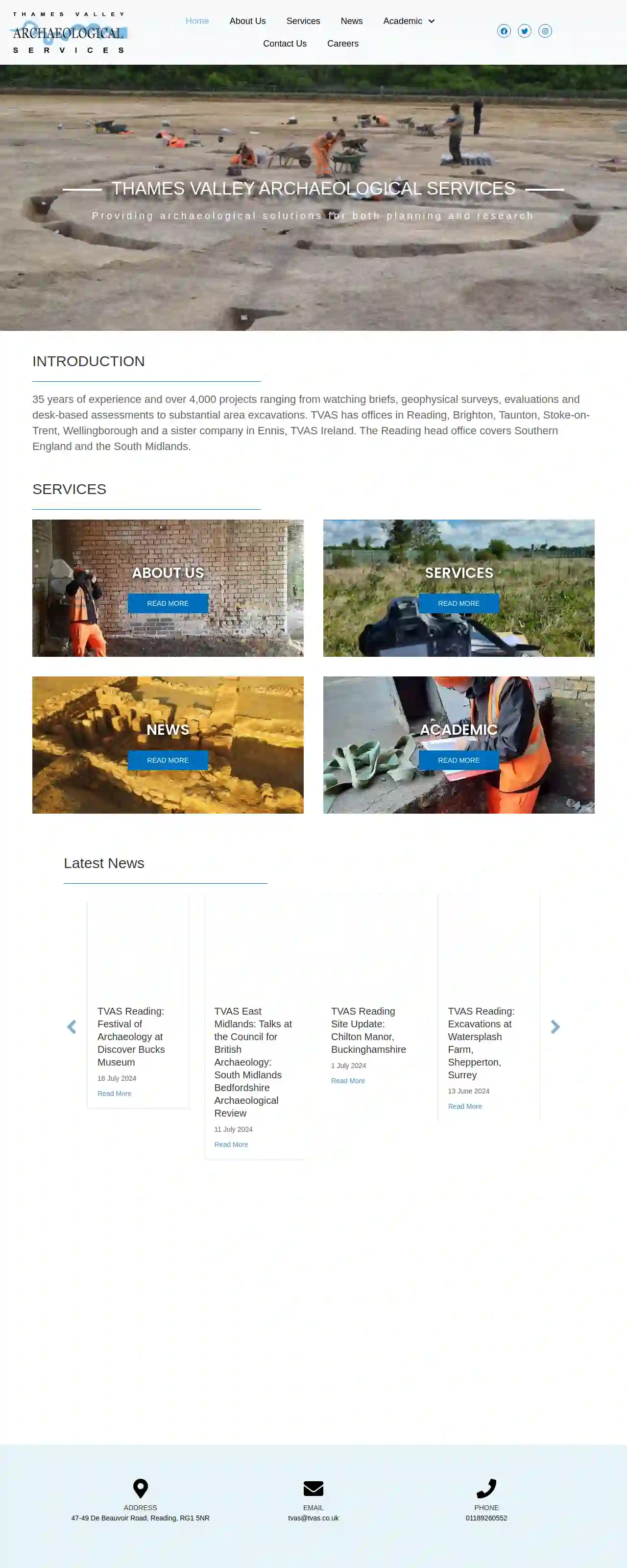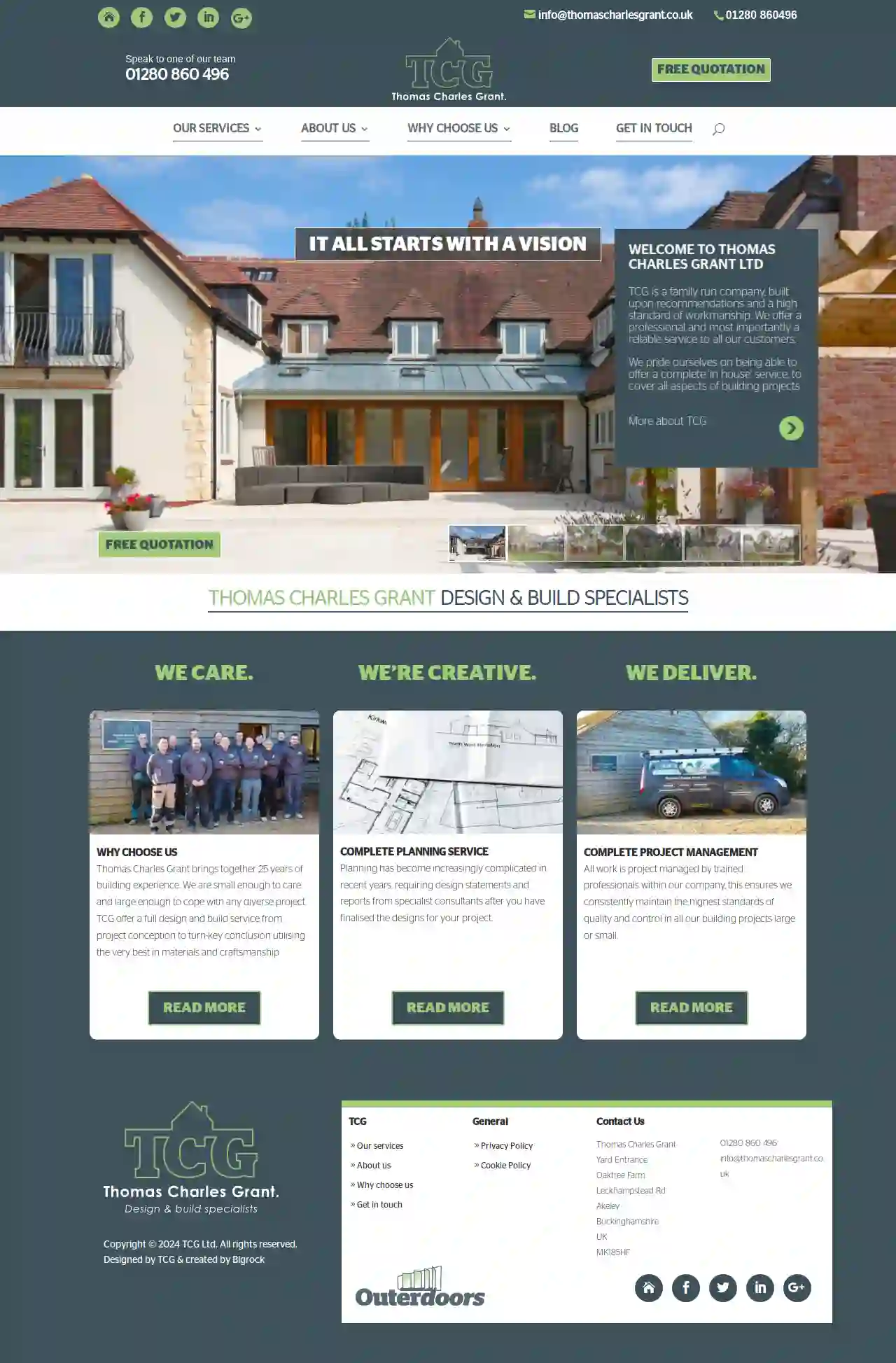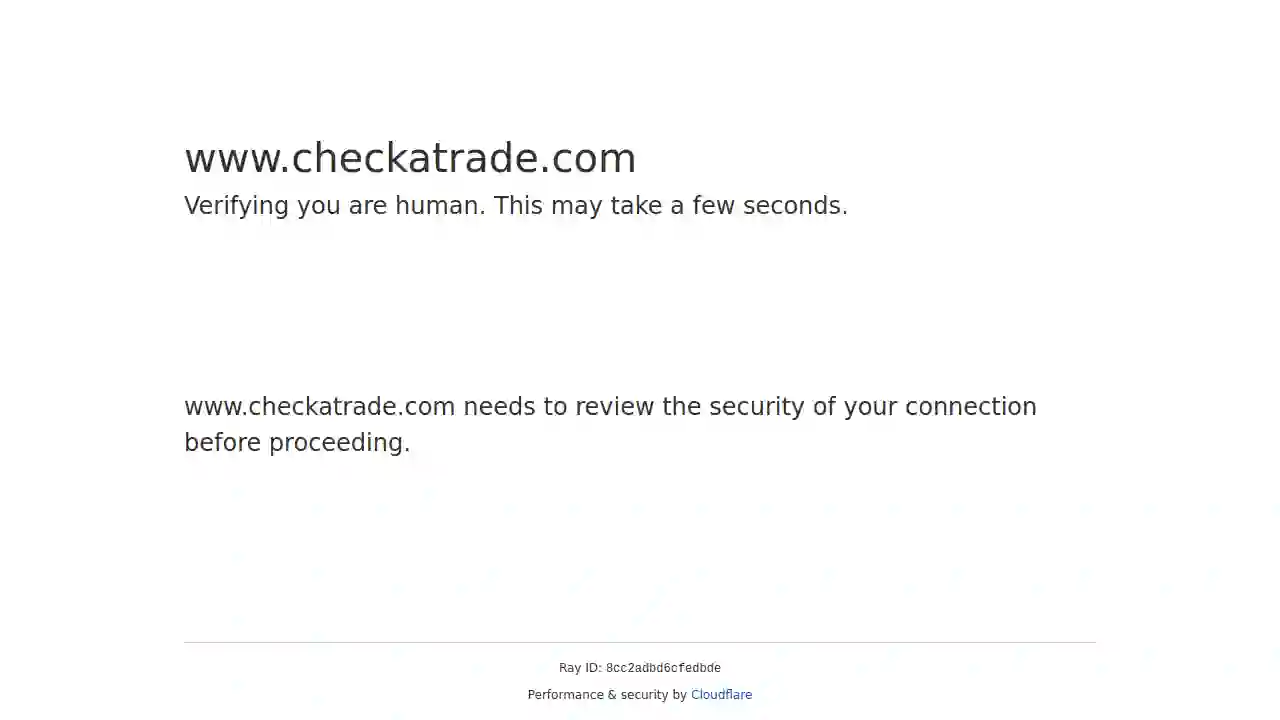Demolition Contractors Chalfont Saint Giles
Find top Demolition Company Near Me in Chalfont Saint Giles
Get 3 FREE Demolition Contractors Near Me quotes for your project today! Compare profiles, reviews, accreditations, portfolio, etc... and choose the best deal.

Regal Construction Group Limited
53 reviewsFawley House, 2 Regatta Place, Marlow Road, Bourne End, Buckinghamshire, SL8 5TD, GBAbout Regal Construction Group Limited At Regal Construction Group Limited, our mission is to construct foundations of trust with precision and passion, ensuring that every project is a testament to our expertise. We are driven by a desire to prioritize customer satisfaction and build long-term relationships with our clients. In an industry that often falls short on delivering high-quality projects, we aim to be a reliable and trustworthy construction company that consistently exceeds expectations. Having witnessed the frustration and disappointment that clients experience when their construction projects are delayed or exceed their budget, we are determined to address these issues head-on. Our goal is to provide exceptional service by paying attention to detail and maintaining clear communication throughout the entire process. We believe that by doing so, we can make a positive impact on the construction industry and change the perception that clients have of construction companies. With a focus on quality, delivery, and communication, we are confident that Regal Construction Group Limited is a leading construction company in the South East of the United Kingdom. We are excited about the opportunities that lie ahead and the chance to make a difference in the industry. Our fundamental values of trust, reliability, quality, delivery, and communication underpin all aspects of our business, ensuring that our clients can rely on us to deliver high-quality construction and building alteration services. Our Team Our team consists of experienced and skilled professionals, including contract managers, project managers, health and safety advisors and skilled construction operatives. We work together to ensure the success of each project we undertake.
- Services
- Why Us?
- Gallery
Get Quote
Thames Valley Archaeological Services
4.47 reviews47-49 De Beauvoir Road, Reading, RG1 5NR, GBThames Valley Archaeological Services (TVAS) is a medium-sized archaeological field unit established in 1988. With over 35 years of experience and over 4,000 projects completed, TVAS has a proven track record of providing comprehensive archaeological solutions for both planning and research. Our expertise spans a wide range of services, from desk-based assessments and geophysical surveys to extensive excavations. We have a strong reputation for working with quarry operators, house builders, and linear projects, ensuring that our work meets the specific planning requirements of each project. TVAS has offices in Reading, Brighton, Taunton, Stoke-on-Trent, Wellingborough, and a sister company in Ennis, TVAS Ireland. The Reading head office covers Southern England and the South Midlands.
- Services
- Why Us?
- Gallery
Get Quote
SIP Structure Ltd
High Wycombe, Buckinghamshire, England, United Kingdom, GBWelcome to SIP STRUCTURE LTD Beyond construction, we create spaces that resonate with your needs and add value to your life. Our Experience At Sip Structure Ltd, we have been providing construction services to a vast range of clients for over two decades. We have successfully completed numerous projects ranging from small home renovations to new build, major house extensions, loft and garage conversions and kitchen & bathroom installations. Our team of experts is well-equipped to handle any construction project, no matter the size. We are construction professionals. Our Services We offer a variety of building services including commercial and domestic property maintenance and repairs, block paved drives, patios and hard landscaping, garden studios, house extensions, new build homes, staircases, tiled roof repairs, loft conversions, listed building works and structural openings. Our team of professionals is committed to delivering high-quality workmanship, on-time completion, and within budget. Our Team Our team of construction professionals are highly skilled and knowledgeable in all aspects of construction. We have established an excellent reputation of professionalism, reliability and most importantly honesty. Our team works with complete professionalism and commitment. See Why Our Customers & Partners Love Sip Structure Ltd Sip Structure Ltd successfully completed a vast number of projects across Buckinghamshire and Surrounding area
- Services
- Why Us?
- Gallery
Get Quote
SINGH DIGGING LTD
5112 reviews51 Berryfield, Slough, SL2 5SA, GBAbout Us Welcome to Singh Digging Ltd, your premier provider of top-notch digging services, proudly serving residential, commercial, and industrial clients. With a diverse range of services, including landscaping, trenching, digging, driveway construction, demolition, excavation, and more, we are your trusted partner for all your excavation needs. INTRODUCTION At Singh Digging Ltd, we take pride in our team of highly skilled professionals who are experts in using cutting-edge technology and state-of-the-art machines. Their proficiency and dedication ensure that every project is completed efficiently, accurately, and to the highest standards, leaving our clients satisfied and their expectations exceeded. WHY CHOOSE US ? Choose Singh Digging Ltd for all your excavation needs and experience top-notch service quality, unmatched expertise, and a commitment to excellence. With over a decade of experience in the industry, our team of highly skilled professionals uses cutting-edge technology and state-of-the-art machinery to deliver precise and efficient results. From landscaping to demolition, our comprehensive range of excavation services caters to residential, commercial, and industrial projects. We adhere to the highest industry standards, prioritizing safety and environmental sustainability while ensuring customer satisfaction. Our vision is to be the best excavation company, and our dedication to innovation and long-lasting relationships makes us the trusted partner for turning your vision into reality. WHY OUR CLIENTS VALUE US? We’re a family run business so there is great pride in the name, and this is reflected in the service offered. We know every great construction project starts with a great demolition project.
- Services
- Why Us?
- Testimonials
- Gallery
Get Quote
Thomas Charles Grant Ltd Design & Build Specialists d
Yard Entrance, Oaktree Farm, Yard Entrance Oaktree Farm Leckhampstead Rd Akeley Buckinghamshire UK, Akeley, MK185HF, GBWELCOME TO THOMAS CHARLES GRANT LTD TCG is a family run company, built upon recommendations and a high standard of workmanship. We offer a professional and most importantly a reliable service to all our customers. We pride ourselves on being able to offer a complete ‘in house’ service, to cover all aspects of building projects. WHY CHOOSE US Thomas Charles Grant brings together 25 years of building experience. We are small enough to care and large enough to cope with any diverse project. TCG offer a full design and build service from project conception to turn-key conclusion utilising the very best in materials and craftsmanship. COMPLETE PLANNING SERVICE Planning has become increasingly complicated in recent years, requiring design statements and reports from specialist consultants after you have finalised the designs for your project. COMPLETE PROJECT MANAGEMENT All work is project managed by trained professionals within our company, this ensures we consistently maintain the highest standards of quality and control in all our building projects large or small.
- Services
- Why Us?
- Gallery
Get Quote
CM Builder Services LTD
52 reviews[ADDRESS LINE 1], [ADDRESS LINE 2], [STREET ADDRESS], [CITY], [POST CODE], GBAbout CM Builder Services Limited CM Builder Services Limited is a reputable and experienced building company based in [CITY], [COUNTRY]. We are dedicated to providing high-quality building services to both residential and commercial clients. Our team of skilled and qualified builders is committed to delivering projects on time and within budget, while maintaining the highest standards of workmanship. We understand that building projects can be stressful, so we strive to make the process as smooth and hassle-free as possible. We offer a comprehensive range of building services, from small repairs to large-scale renovations. We are also fully insured and accredited, giving you peace of mind that your project is in safe hands. At CM Builder Services Limited, we pride ourselves on our commitment to customer satisfaction. We believe in building strong relationships with our clients and ensuring that they are happy with the finished product. We are always happy to answer any questions you may have and provide you with a free, no-obligation quote.
- Services
- Why Us?
- Accreditations
- Testimonials
Get Quote
Lawley build
51 reviews1 Halfway House, 706 London Road, High Wycombe, HP11 1HE, GBLawley Build: Your Trusted Partner for Home Improvement and Commercial Projects With over three decades of experience in the building trade, Lawley Build is a family-run company dedicated to providing exceptional service and high-quality workmanship. We offer a comprehensive range of services, from plumbing and electrics to extensions and loft conversions, catering to both domestic and commercial projects. We understand that your home is your sanctuary, and we strive to make the renovation process as smooth and stress-free as possible. Our team is committed to working closely with you, guiding you through every step of your project, from initial design and planning to the final finishing touches. Whether you need a small repair, a complete home renovation, or a large-scale commercial development, Lawley Build has the expertise and dedication to deliver exceptional results. We take pride in our commitment to quality, efficiency, and customer satisfaction.
- Services
- Why Us?
- Testimonials
- Gallery
Get Quote
Buckingham Fencing & Groundworks
510 reviewsMeadow Bank Cottage, Duck Lake, Maids Moreton, MK18 1RF, GBAbout Us Buckingham Fencing & Groundworks is a professional building contractor company serving residential & private domestic clientele across Buckinghamshire, Oxfordshire, Northamptonshire & Bedfordshire, with a wide range of experience in all types of building services including Fencing, Groundwork, Drainage, Driveways & Garden Paving. Our Building solutions encompass all different types of Boundary & surface construction. We also provide a full landscaping service to meet client requirements and give a completed finish to any project. What We Do Our goal is to bring professional construction services to even the smallest of projects. We offer an end-to-end client experience that includes seamless communication, budgeting, on-site organization, and solid, quality workmanship every time. We are 100% focused on customer satisfaction and take pride in our high standards. Why Choose Us? As experienced Builders we know that any long standing job starts with a quality foundation or substructure. That’s why we use a top grade construction methods & materials from the start with a proven track record for excellence. Our team of professional Builders are all vetted & fully qualified. A supervisor will be present on every job to ensure work is carried out to the highest standard and regulations are adhered to. We enjoy a reputation of excellence, and will gladly supply customer references on request. We strive to improve the quality and the value of the products and services we offer. Our commitment and expertise has allowed us the opportunity to experience ongoing growth.
- Services
- Why Us?
- Gallery
Get Quote
Rye Pro Construction
53 reviews50 Lower Road, Denham, UB9 5EB, GBAbout Us Started over 20 years ago, RyePro Construction started out with home refurbishments and home extensions. We are now proud to have worked with a wide range of clients, from residential projects to small businesses. Our commitment to quality and customer satisfaction has earned us a reputation as one of the top construction companies in the Greater London area. We serve West London and the surrounding areas.
- Services
- Why Us?
- Testimonials
- Gallery
Get Quote
Platinum Build
51 reviews10 Queens Road, Thame, OX9 3NQ, GBAbout us Are you looking for a reliable building company in Oxfordshire, Buckinghamshire or London? Welcome to Platinum Build, based in Oxfordshire, where we have over 12 years of experience in building and remodeling homes. We specialize in new builds, house and kitchen extensions, and bathroom and kitchen installations. Our team of skilled professionals is dedicated to providing high-quality work and exceptional customer service. We understand that building or remodeling a home can be a daunting task, which is why we work closely with our clients to ensure that their vision becomes a reality. Whether you’re looking to build a new home, add an extension to your existing property, or update your bathroom or kitchen, we have the expertise to get the job done right. Our team is skilled in all aspects of construction, from the initial design and planning stages to the final finishing touches. We use only the highest quality materials and employ the latest construction techniques to ensure that our work is of the highest standard. We also take great care to minimize the impact of our work on the environment, using eco-friendly materials and methods wherever possible. If you’re looking for a construction company in Oxfordshire, Buckinghamshire or London that you can trust to deliver a high-quality job, look no further than Platinum Build. Contact us today to schedule a consultation and let’s start building your dream home together.
- Services
- Why Us?
- Testimonials
- Gallery
Get Quote
Over 13,059+ Excavation Companies registered
Our excavation contractors operate in Chalfont Saint Giles and beyond!
ExcavationHQ has curated and vetted Top Excavation Contractors near Chalfont Saint Giles. Find a trustworthy pro today.
Frequently Asked Questions About Demolition Contractors
- Safety: Experienced contractors have the knowledge, skills, and safety training to execute demolitions safely, minimizing risks to workers and surrounding areas.
- Efficiency: Contractors have the specialized equipment and expertise to complete demolitions efficiently, saving time and reducing project costs.
- Compliance: Reputable contractors are familiar with local regulations and permitting requirements, ensuring compliance and avoiding legal issues.
- Waste Management: Contractors have waste management plans to handle debris responsibly, including recycling and proper disposal.
- Liability Protection: Insured contractors protect you from financial responsibility for accidents or damages during the demolition process.
- Size and Type of Structure: The method should be suitable for the structure's size, height, and construction materials.
- Site Location and Accessibility: The method should be feasible given the site's location, surrounding buildings, and access constraints.
- Environmental Considerations: Prioritize methods that minimize environmental impact, such as deconstruction or selective demolition if feasible.
- Budget: Different demolition methods have varying costs, so choose one that fits your budget.
- Safety: Prioritize methods that ensure worker safety and minimize risks to surrounding areas.
- Experience: Look for companies with a proven track record and years of experience in the demolition industry.
- Licensing and Insurance: Ensure the contractor is properly licensed to operate in your area and carries adequate insurance to protect you from liability.
- Safety Record: Inquire about their safety protocols and accident history. A reputable contractor prioritizes safety.
- References and Reviews: Ask for references from past clients and check online reviews to gauge their reputation and customer satisfaction.
- Professionalism: Choose a company that communicates clearly, provides detailed estimates, and has a courteous and responsive team.
- Clear the Site: Remove all furniture, appliances, personal belongings, and any valuable items from the structure.
- Secure the Perimeter: Fence off the demolition area to prevent unauthorized access and protect surrounding property.
- Disconnect Utilities: Arrange for the disconnection of electricity, gas, water, and other utilities servicing the building.
- Hazardous Material Abatement: If asbestos, lead paint, or other hazardous materials are present, have them professionally removed before demolition begins.
- Notify Neighbors: Inform your neighbors about the demolition schedule to minimize disruptions and address any concerns.
- Obtain Permits: Ensure all necessary demolition permits are in place before starting work.
What are the benefits of hiring a professional demolition contractor?
How do I choose the right demolition method for my project?
How do I find a reputable demolition contractor?
How do I prepare my property for demolition?
What are the benefits of hiring a professional demolition contractor?
- Safety: Experienced contractors have the knowledge, skills, and safety training to execute demolitions safely, minimizing risks to workers and surrounding areas.
- Efficiency: Contractors have the specialized equipment and expertise to complete demolitions efficiently, saving time and reducing project costs.
- Compliance: Reputable contractors are familiar with local regulations and permitting requirements, ensuring compliance and avoiding legal issues.
- Waste Management: Contractors have waste management plans to handle debris responsibly, including recycling and proper disposal.
- Liability Protection: Insured contractors protect you from financial responsibility for accidents or damages during the demolition process.
How do I choose the right demolition method for my project?
- Size and Type of Structure: The method should be suitable for the structure's size, height, and construction materials.
- Site Location and Accessibility: The method should be feasible given the site's location, surrounding buildings, and access constraints.
- Environmental Considerations: Prioritize methods that minimize environmental impact, such as deconstruction or selective demolition if feasible.
- Budget: Different demolition methods have varying costs, so choose one that fits your budget.
- Safety: Prioritize methods that ensure worker safety and minimize risks to surrounding areas.
How do I find a reputable demolition contractor?
- Experience: Look for companies with a proven track record and years of experience in the demolition industry.
- Licensing and Insurance: Ensure the contractor is properly licensed to operate in your area and carries adequate insurance to protect you from liability.
- Safety Record: Inquire about their safety protocols and accident history. A reputable contractor prioritizes safety.
- References and Reviews: Ask for references from past clients and check online reviews to gauge their reputation and customer satisfaction.
- Professionalism: Choose a company that communicates clearly, provides detailed estimates, and has a courteous and responsive team.
How do I prepare my property for demolition?
- Clear the Site: Remove all furniture, appliances, personal belongings, and any valuable items from the structure.
- Secure the Perimeter: Fence off the demolition area to prevent unauthorized access and protect surrounding property.
- Disconnect Utilities: Arrange for the disconnection of electricity, gas, water, and other utilities servicing the building.
- Hazardous Material Abatement: If asbestos, lead paint, or other hazardous materials are present, have them professionally removed before demolition begins.
- Notify Neighbors: Inform your neighbors about the demolition schedule to minimize disruptions and address any concerns.
- Obtain Permits: Ensure all necessary demolition permits are in place before starting work.